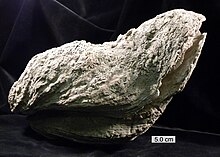
The Ostreidae, the true oysters, include most species of molluscs commonly consumed as oysters. Pearl oysters are not true oysters, and belong to the order Pteriida.
Perkinsus marinus is a species of alveolate belonging to the phylum Perkinsozoa. It is similar to a dinoflagellate. It is known as a prevalent pathogen of oysters, causing massive mortality in oyster populations. The disease it causes is known as dermo or perkinsosis, and is characterized by the degradation of oyster tissues. The genome of this species has been sequenced.
Perkinsus is a genus of alveolates in the phylum Perkinsozoa. The genus was erected in 1978 to better treat its type species, Perkinsus marinus, known formerly as Dermocystidium marinum. These are parasitic protozoans that infect molluscs, at least some of which cause disease and mass mortality. P. marinus is the most notorious, causing the disease perkinsosis, or dermo, in wild and farmed oysters.

The Pacific oyster, Japanese oyster, or Miyagi oyster is an oyster native to the Pacific coast of Asia. It has become an introduced species in North America, Australia, Europe, and New Zealand.
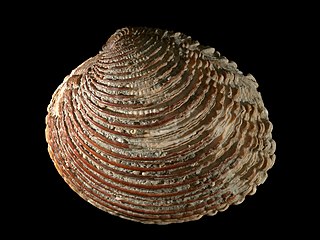
The Veneridae or venerids, common name: Venus clams, are a very large family of minute to large, saltwater clams, marine bivalve molluscs. Over 500 living species of venerid bivalves are known, most of which are edible, and many of which are exploited as food sources.

Ostrea is a genus of edible oysters, marine bivalve mollusks in the family Ostreidae, the oysters.

Palaeoheterodonta is a subterclass of bivalve molluscs. It contains the extant orders Unionida and Trigoniida. They are distinguished by having the two halves of the shell be of equal size and shape, but by having the hinge teeth be in a single row, rather than separated into two groups, as they are in the clams and cockles.
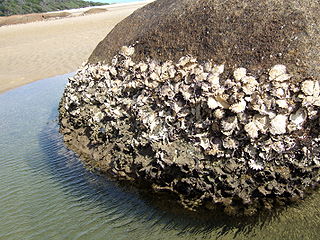
Rock oysters are true oysters of the genus Saccostrea, belonging to the subfamily Saccostreinae of the family Ostreidae.
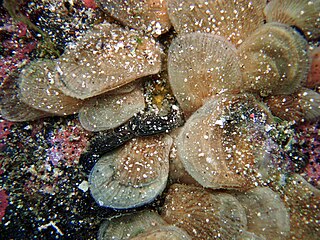
Isognomon is a genus of marine bivalve mollusks which is related to the pearl oysters.

Modiolus, the horsemussels, are a genus of medium-sized marine bivalve molluscs in the family Mytilidae.
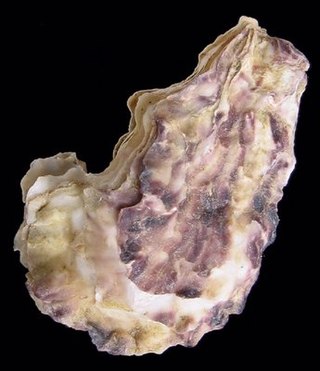
The Portuguese oyster is a species of oyster found in the southwest Iberian Peninsula, closely related to the Pacific oyster. Although first identified as a native European species, genetic studies have suggested the Portuguese oyster originated from the Pacific coast of Asia and was introduced to Europe by Portuguese trading ships in the 16th century. The species is usually found in coastal river mouths and estuaries.
Bonamia ostreae is a parasitic Rhizaria in the phylum Haplosporidia that can cause lethal infections in shellfish, particularly the European flat oyster, Ostrea edulis. Infection in oysters rarely results in clinical signs of disease and often the only indication of the infection is increased mortality. The Australian flat oyster, Ostrea angasi, has been infected with two similar Bonamia parasites, Bonamia exitiosa and B. roughleyi.

Plicatula is a genus of saltwater clams, marine bivalve molluscs, known commonly as kitten's paws or kittenpaws in the family Plicatulidae.
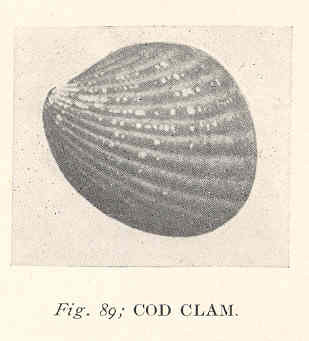
Cyclocardia is a genus of molluscs in the family Carditidae.

Chama is a genus of cemented saltwater clams, marine bivalve molluscs in the family Chamidae, the jewel boxes.

Codakia is a genus of saltwater clams, marine bivalve molluscs in the family Lucinidae.

Magallana is a genus of true oysters containing some of the most important oysters used for food. Species in this genus have been moved from Crassostrea after it was found to be paraphyletic.
The Iwagaki oyster, is an oyster native to Japan. It was first described in 1934.

